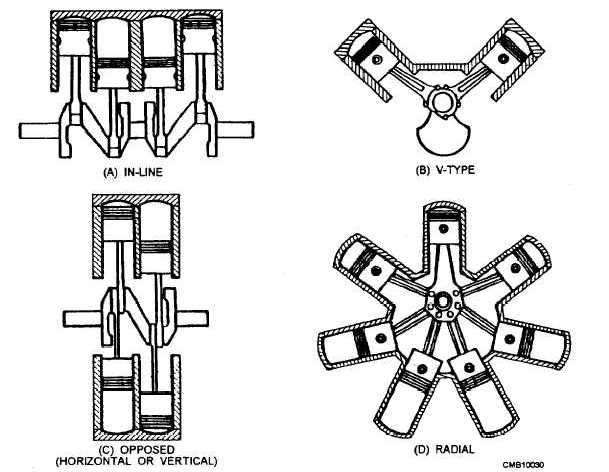During the other three strokes, it is absorbing power to push out the exhaust gas, to pull in a fresh charge, and to compress the charge. The flywheel makes the engine run without varying much of the speed during each revolution. It is a heavy steel wheel, attached to the end of the crankshaft. When it is rotating, considerable effort is required to slow it down or stop it. Although the wheel does slow down somewhat as it delivers power to the engine during the exhaust, intake, and compression strokes, the wheel speed increases during the power stroke. In effect, the flywheel absorbs some of the engine power during the power stroke and then provides it back to the engine during the other three strokes.
In a multi-cylinder engine, the flywheel functions in a similar manner. It absorbs power when the engine tends to speed up during the power stroke, and it provides power to the engine when the engine tends to slow down during intervals when little power is being delivered by the engine.
In addition to the engine itself, which is the power producer, there must be accessory systems to provide the engine with other requirements necessary to operate it. These systems are the fuel system, the lubrication system, the electrical system, the cooling system, and the exhaust system
ARRANGEMENT OF CYLINDERS
Engines are also classified according to the arrangement of the cylinders (fig. 2-10): IN-LINE with all cylinders cast in a straight line above the crankshaft; V-TYPE with two banks of cylinders mounted in a V- shape above the crankshaft; HORIZONTAL OPPOSED with cylinders arranged 180 degrees from other with opposing cylinders sharing a common crankshaft journal; and RADIAL with the cylinders placed in a circle around the crankshaft
IN-LINE - In-line is a common arrangement for both automotive and truck applications. It is commonly built in four- and six-cylinder configurations.
V-TYPE - V-type is also a common arrangement for both automotive and truck applications. The V-type engine in a six-cylinder configuration is suitable for front-wheel drive cars where the engine is mounted transversely.

Figure 2-10. - Typical cylinder arrangements 2-10
Continue Reading